Airfix 1/48 Scale Messerschmitt Bf 109 E-4/B
My first Airfix build for many years was a far cry from experiences with this manufacturer's kits from years gone by. I've had this kit for several years now, one of two bought together in a rash of enthusiasm to produce models of all the known aircraft that crashed within a 10-mile radius of where I live now, which is also where I grew up.
I'm still some way from completing that task, a failing made worse in some ways by my decision to build this as the first Bf 109 fighter-bomber to have been lost over Britain during WW2. This is my interpretation of Leutnant Horst Marx' “Yellow 3” from the 3rd Staffel of Erprobungsgruppe 210 (3/Erpro 210) which crashed at Frant, just south of Tunbridge Wells, shortly after 1900 hours on the 15th of August 1940.
Leutnant Horst Marx in front of "Yellow 3", his Bf 109 E-4/B
Erpro 210 was on its last mission of the day when the setting sun and a heavy ground haze led them to miss their primary target, Kenley airfield, overshooting this to the northwest, where they attacked Croydon airfield in error. Initially, the fighter-bomber formation was escorted by elements of JG 52, but by the time Erpro 210 was over the target area, their escort had disappeared, in all probability due to a combination of anxiety over fuel levels, complicated by the questionable visibility.
On previous missions, Erpro 210 achieved some element of surprise which allowed their aircraft to return to base at Calais-Marck with few casualties. Black Thursday, as the 15th of August became known in the Luftwaffe, changed all that.
Their approach towards Kenley from the southeast had been on the tail of other bomber sorties against targets in Kent and, by the time the unit's leader decided to attack Croydon, two Hurricane squadrons from Biggin Hill and Croydon itself had just been scrambled in their direction, soon followed by other Hurricanes from 501 Squadron which had already been airborne against an earlier raid. The result was a disaster for Erpro 210. Out of 22 aircraft that attacked Croydon, six Bf 110s and one Bf 109 E-4/B were shot down and two further Bf 110s limped back to France damaged.
Horst Marx turned for home after dropping his 250 kg bomb on Croydon and spotted the damaged Bf 110 of the unit's commander, Hauptmann Walter Rubensdoerffer, limping towards the Channel coast. The unit's Bf 109s normal procedure after dropping their bombs was to act as escort to the Bf 110 twin engine fighter-bombers, so Marx was intent on giving his leader some cover against the growing number of Hurricanes that had been savaging the German formation as it climbed desperately for height after dropping their bombs. “Yellow 3” inadvertently flew across the sights of one of the 32 Squadron Hurricanes from Biggin Hill, taking hits which convinced Marx he couldn't get any further back towards France, so he baled out with the aircraft crashing into an apple orchard, leaving nothing but unidentifiable debris at the site for the RAF crash inspectors to examine.
Walter Rubensdoerffer and his gunner didn't get much further, their aircraft crashing and exploding near Rotherfield, killing both crew members. They'd been attacked and damaged by a variety of Hurricanes after leaving Croydon but, arguably, the final attack came from a 501 Squadron pilot, Byron (Ron) Duckenfield, who fired off the last of his ammunition before having to break off for lack of fuel.
Several interesting points emerged from this raid. Rubensdoerffer's decision to attack Croydon is seen by some as laying the groundwork for Churchill's decision to start bombing Berlin. Prior to the Croydon raid, both Britain and Germany had agreed not to bomb each other's capital cities, but Croydon was within the Greater London boundaries and, before the war, had been London's principal civilian airfield. As the war progressed, such a distinction became progressively less relevant.
Another interesting element is that until much later in September 1940, RAF Intelligence had no evidence to suggest that some Bf 109s had been modified for the fighter-bomber role. The reports of earlier raids made by Erpro 210 on Channel shipping, coastal and other targets claimed that Ju 87s (Stukas) had been involved along with the Bf 110s. A case in point is the 12th August attack mounted by Erpro 210 against the RDF (radar) sites along the Kent and Sussex coasts. Four of these sites were attacked, three clearly by Bf 110s and the fourth apparently by Stukas, when it had really been the Bf 109s from 3/Erpro 210 rather than aircraft from any of the Stuka units then operating from France.
The kit itself, now marketed in a different packaging, was relatively simple to put together, only really hampered by my own fascination with detail, which is always time-consuming for someone like myself with questionable vision and seven thumbs. The parts fitted well and those small bits that were sacrificed to the carpet monster were scratch-built to almost the right size. The only criticism I have is that Airfix, for some reason, seem to have decided that the nav lights on each wing tip were recessed into the forward corners of the wing structure when they're clearly mounted as small round lenses sticking out from the tip profile slightly behind the forward wing tips. Not a difficult fix, but why? Even their old 1/24 Bf 109 E kit had it right.
Master brass gun barrels, Yahu IP, Quickboost Revi sight and paper seatbelts were the aftermarket extras used, but the other fiddley bits were all scratch built, some several times to get them as right as possible. I experimented with the camo pattern a bit, having exhausted my enthusiasm for the rather repetitive patterns on the wings, taking the view that Erpro 210 showed signs of some variations from the norm on the fuselage, so why not on the horizontal surfaces? I'm sure many would disagree but check out the likes of JG 53.
For those who're interested the two elderly gents are (l to r) Ron Duckenfield and Bob Doe, both of whom I had the pleasure of meeting at a book signing in Tunbridge Wells in September 2008. Both are sadly no longer with us.
Apologies for the dodgy photos. I really must get Santa to bring me a new camera.
Paul

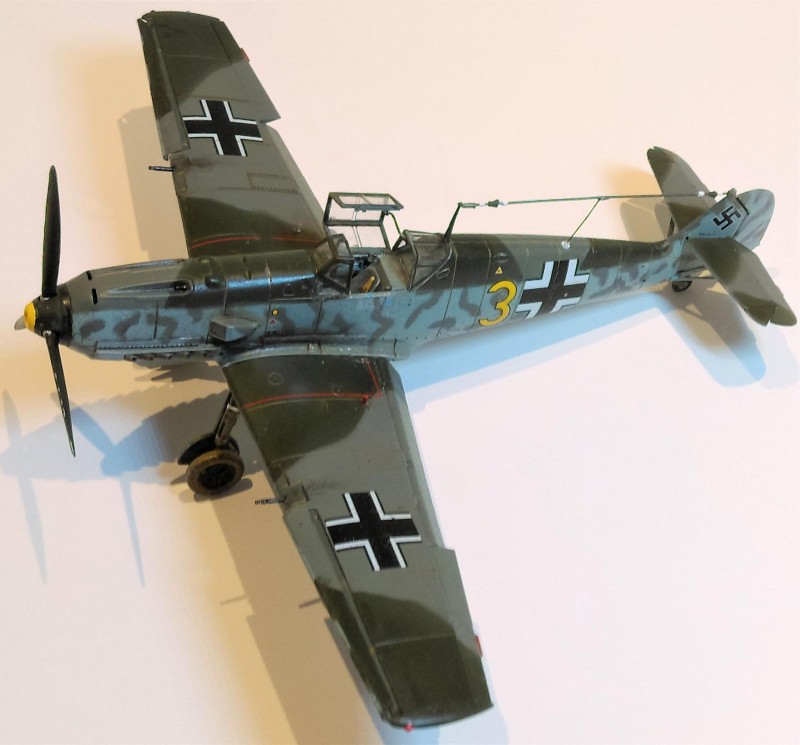
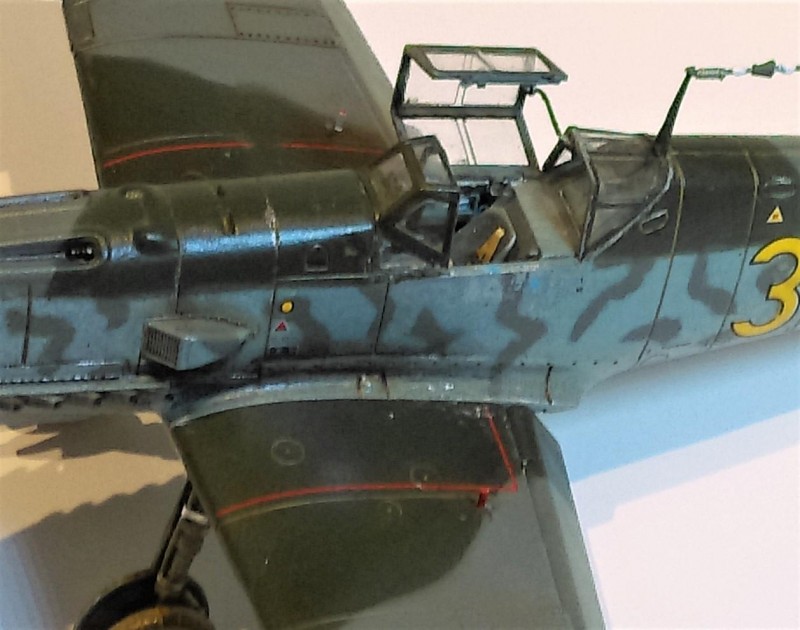
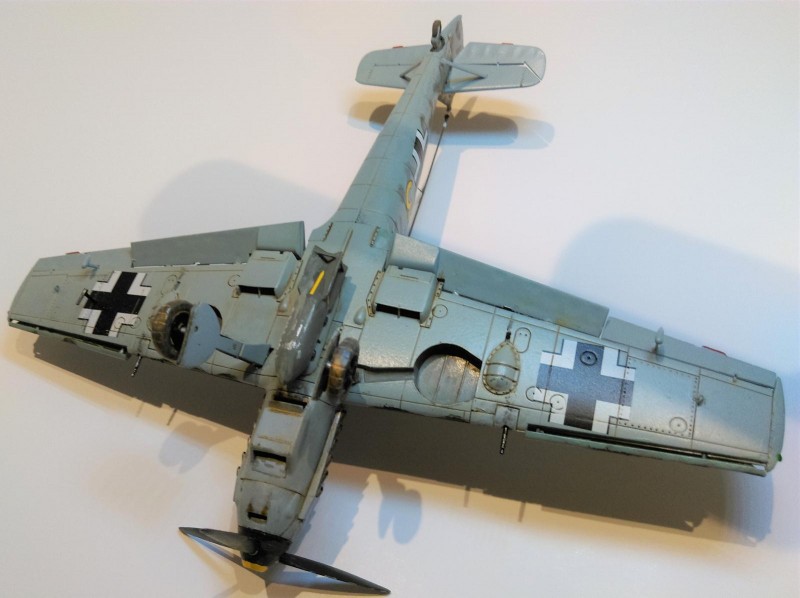
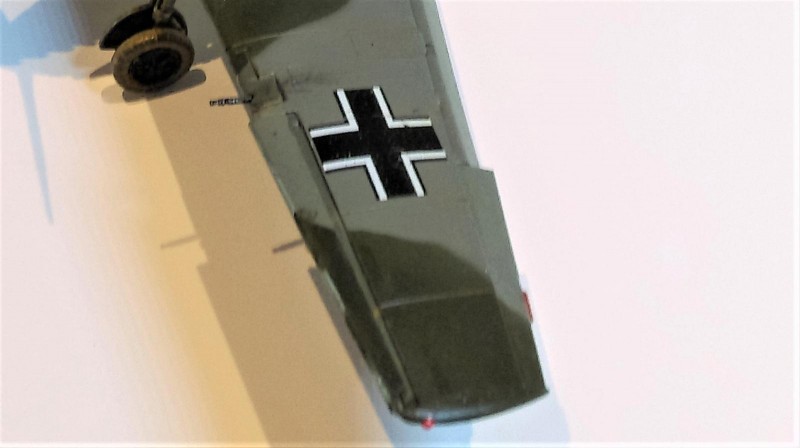
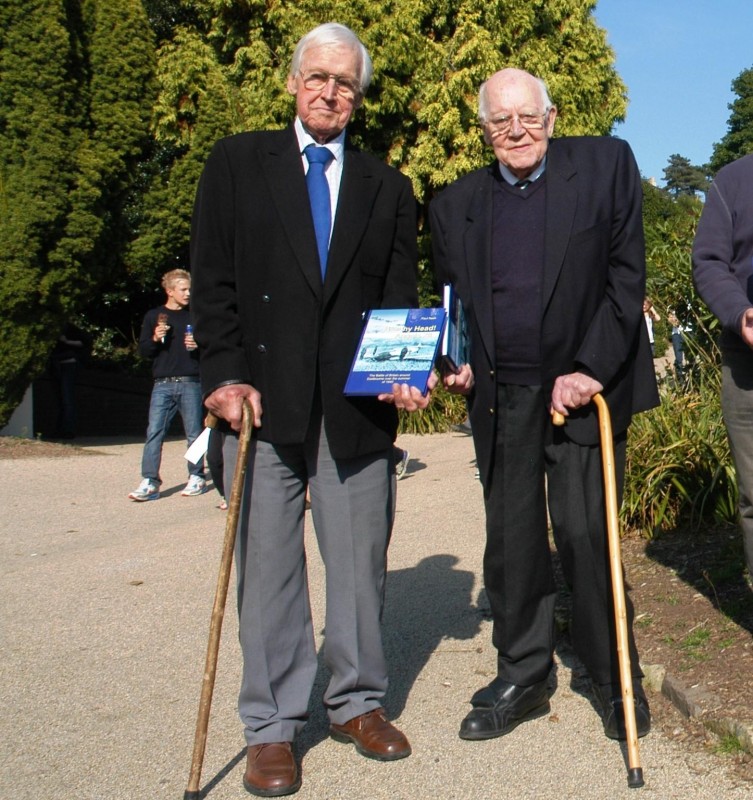
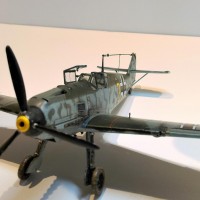
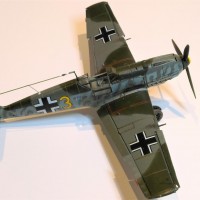
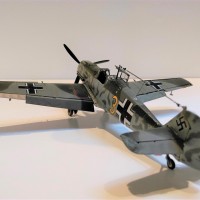
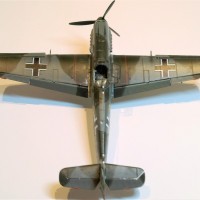

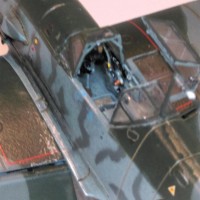

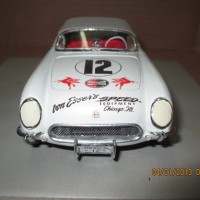
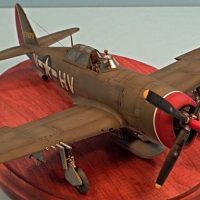
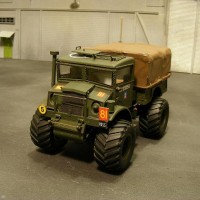
What a nice Emil Paul! Thanks for sharing this story and pictures with us!
What a unique project! Great idea, Paul. And a lovely build too - beautiful overall but now I am really taken with your scratch-building of the antenna wires. Brilliant story - stunning build!
Me ha encantado Paul !. Que historia tan interesante y cuantos detalles de todo lo ocurrido,así como su localización geográfica.El modelo ha quedado francamente bien y con el desgaste justo para no estropear el esquema de camuflaje.
Incluir la foto de Leutnant Horst Marx ,con el avión,es un lujo solo propio de escritores bien documentados.
También me ha gustado la foto tuya con el libro .¿Supongo que será tu hermano el acompañante?. Hoy me tomaré un rioja para brindar por vosotros.
Perdona Paul por confundir a Ron Duckenfield y Bob Doe con tu persona y la de tu hermano pero no había leído el final del artículo y con las prisas de contestar he cometido un error imperdonable.Siento mucho que Ron Duckenfield y Bob Doe ya no estén con nosotros .
No worries Julio - Attached is the full photo from which the images of Bob Doe and Ron Duckenfield were taken. I'm the slightly younger one but don't forget this was 10 years ago. It was taken next to a memorial in Tunbridge Wells to Hugh Dowding, the head of Fighter Command through the most critical period of the BoB - Paul
1 attached image. Click to enlarge.
Really nice build 🙂 Like the details on cockpit window and antenna.
Bravo!
Great BF109, Paul! I like that non-standard camo pattern on the fuselage. The antenna wiring is really interesting, as well.
Thanks for sharing!
Really nice, Paul. that Airfix kit is a winner and a lot better than people start out thinking it is.
Rubensdorffer was one of the few for-real Nazis in the Lufwaffe, being a Swiss who volunteered for the International Aryan's Crusade. Good riddance to him.
Nicely done Paul.
Excellent work Paul. Both the story line and the machine are first class. I can tell that you have done your homework on this one ! It looks fantastic and is spot on... a very well represented "Emil".
Are the landing gear indicators on top of the wing included in the Airfix kit or did you scratch build them ? Also the slotted leading edge flaps are properly deployed since the plane is sitting on the ground. Is this something that you did or does the kit include this option ?
Nicely done !
"liked"
Hi Louis - The indicators aren't part of the OOB kit contents. Like you, I thought they were landing gear indicators like on early Spits, but soon discovered they were actually flap position indicators wiith the inside faces painted white and the outside faces red. I just used some suitably sized aluminium scrap let into the wing surface at what looked to be the right position.
The leading edge slats come seperately in the kits and you can position them either open or closed. I seem to recall the original design was de Havilland's but adopted by our Willy pre-1939 on both the 109 and 110.
A sad year's output (2) compared with your iron works approach.
Paul
Guys -Thanks for all your encouraging comments. What next...? Paul
Great story and build